There is so much more going on inside your tire than what meets the eye. Most people don't give much thought to the actual science put into tires. They probably just see a round-shaped rubber object and move on with their lives.
But when you're shopping for such a critical item responsible for your family's safety and comfort, that's no way to do business. It's better to research the ins and outs of a product and find out as much as possible to make an informed decision.
Don't worry. We're here to help. Today we're going to explain the difference between radial and non-radial tires with a few excellent options to help make the best decision for your situation.
Let's define radial tires, the most common version found on today’s vehicles.
Radial tires are manufactured with cords laid bead to bead at 90 degrees that run perpendicular to the direction of travel.
So, why would you care about a tire's cord configuration? It's simple. The cord design prevents internal friction by stopping plies from rubbing against each other. This means less friction and reduced heat build-up, which in turn helps facilitate a softer and more comfortable ride.
Next, steel belts are built into a radial tire's tread to increase stability. The steel belts hold a tire's tread flat, creating a consistent contact area with the road.
Radial tires deliver a softer ride because of the layout of the tire's plies and the flex of the sidewalls, ensuring more stable contact with the road’s surface and a smoother ride. You'll also feel less vibration as you drive.
But a smooth ride isn't the only benefit of radial tires. Other advantages include reduced fuel consumption due to less rolling resistance. Who wouldn’t want to save fuel with the crazy high gas prices these days? And with less heat generated by the tire, you can expect extended tire life. Sweet!
SHOP NEW TIRES NOW
Non-radial tires are also known as bias-ply tires.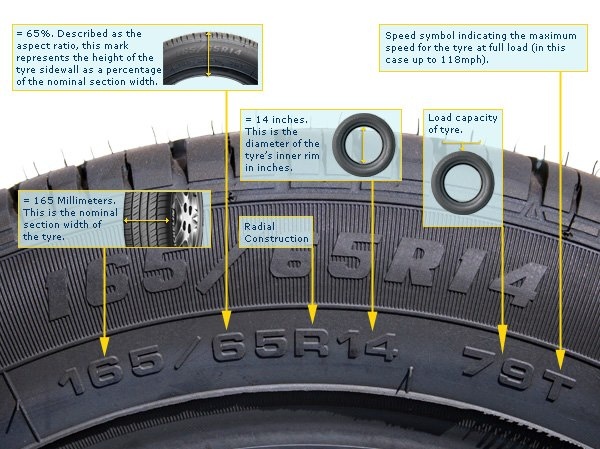 These are typically made with nylon cords that are layered, creating plies that extend diagonally from one bead to the other. That means the tire's sidewall and tread have the same structure.
These are typically made with nylon cords that are layered, creating plies that extend diagonally from one bead to the other. That means the tire's sidewall and tread have the same structure.
Each consecutive ply is laid at an opposing angle to the first, forming a crisscross pattern. The tire's stability is created using additional layers. This layering system makes for a remarkably durable tire with high puncture resistance.
The graphics from Bridgestone Tire Company above illustrate radial vs. non-radial tires.
Why would you want bias-ply tires as opposed to radials? Think off-road vehicles and those who like to play in the mud. Non-radial tires are also used with construction, farm equipment and trailers because they're less expensive and easier to repair. Their crisscross patterned cords create more rigid sidewalls, leading to a smoother ride on rough surfaces.
Since a bias-ply sidewall carries some of the load, it allows sidewall lugs to extend beyond the shoulder to expand the available contact surface.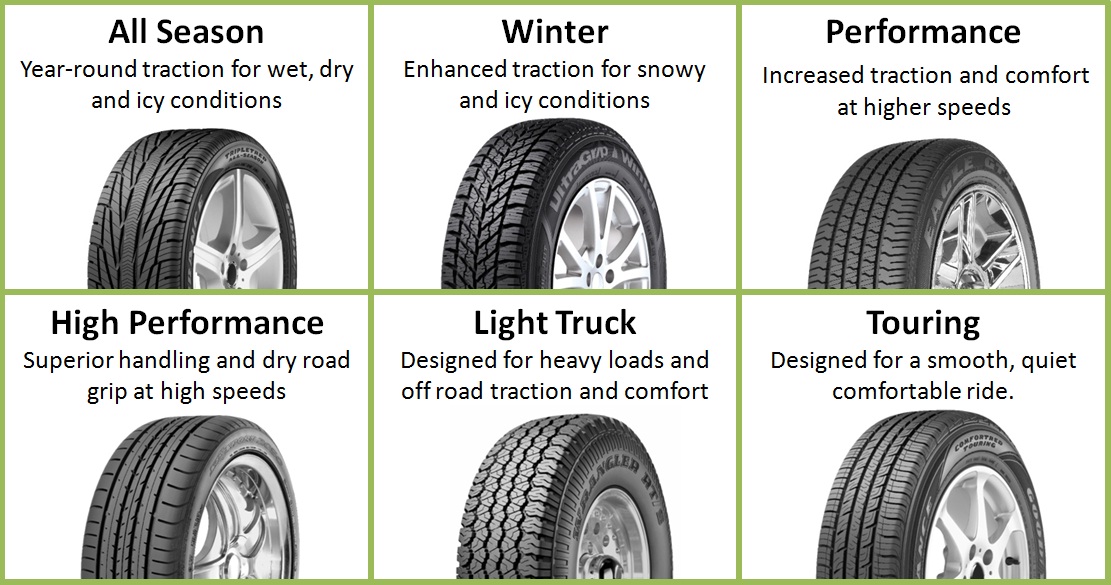 Bias-ply tires conform more readily in the tread, offer a more compliant ride off-road, and typically cost less than equally sized radial tires.
Bias-ply tires conform more readily in the tread, offer a more compliant ride off-road, and typically cost less than equally sized radial tires.
Despite the advantages bias-ply tires deliver off-road, they have numerous drawbacks. Because of the construction of bias-ply tires, they don't provide the high-speed stability that a radial does. Increased rolling resistance and heat build-up means bias-ply tires will wear more quickly if used extensively for highway travel.
Finding out whether your vehicle has radial or non-radial tires is super simple. You just have to look at the numbers, letters and symbols found on the tire's sidewall.
For example, 205/65 R 15 is a very common tire. The letter R refers to the construction of the tire: R for radial, D for diagonal, and RF for run-flat. Most likely, your tires have an R on the sidewall, meaning they are radials.
If you're looking for tires that are good on the trail and exceptional on pavement, stick with radials.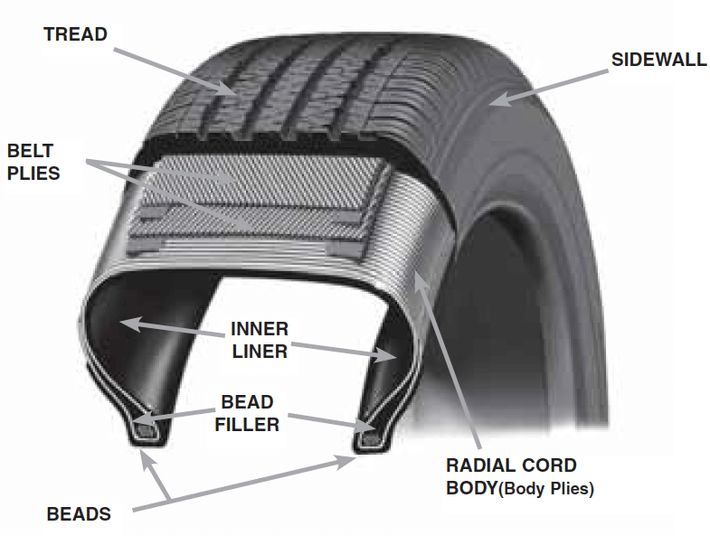 But if you're a hardcore weekend warrior with an off-road vehicle looking for some extreme fun, you might want to check out some bias-ply tires.
But if you're a hardcore weekend warrior with an off-road vehicle looking for some extreme fun, you might want to check out some bias-ply tires.
Radial tires are regular tires unless you drive a truck or heavy equipment. Since the early 1980s, radial tires have been a standard issue on cars sold in the U.S.
Run flats have built-in designs that allow you to drive for a short distance -- preferably to a tire shop -- if your tire is punctured or loses air. You can't drive on them indefinitely; they offer limited support to get you off the road safely, usually about 50 miles. Radial tires do not have this feature, and typically vehicles with radial tires include a spare tire in case of flats.
To fully appreciate the history of tires, you have to first look at the evolution of the wheel itself.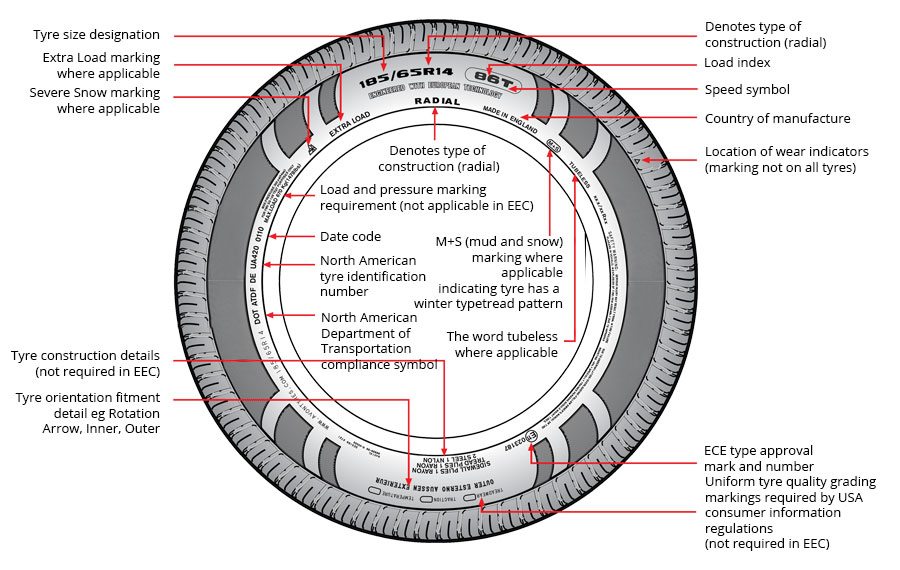 Mans greatest invention, the wheel was first recorded back to 3500BC in the Neolithic era, just before the bronze age. Beginning with agriculture, wheels were soon used in everything from chariots to toys and are a symbol of human technological advancement. Could you imagine life before wheels? Wouldn't be fun, to say the least.
Mans greatest invention, the wheel was first recorded back to 3500BC in the Neolithic era, just before the bronze age. Beginning with agriculture, wheels were soon used in everything from chariots to toys and are a symbol of human technological advancement. Could you imagine life before wheels? Wouldn't be fun, to say the least.
One of the major issues of wheels was and is, wear and tear. While the constant rotation around a central axle was excellent for carrying heavy things or moving quickly, it meant that the wheel would slowly wear away over time. They wouldn’t wear away evenly either. A chip, a rock or simple uneven wear would make the wheel no longer around causing the expensive task of replacing something that wasn’t quite broken. What was needed was an expendable layer that would absorb damage, wear away and then be easily replaced at a much more affordable cost than a brand new wheel. That is what a tire does.
Despite the need that they filled, tires are a relatively recent invention. The earliest types of tire were leather bands wrapped around a wooden wheel. The leather was quickly replaced with metal bands which lasted a lot longer. The emergence of trains and railway networks introduced steel tires to metal train wheels. The bands were heated by a Wheelwright who would heat the tire, place it over the wheel and then quench it. This would make the metal contract and fit tightly around the wheel.
The earliest types of tire were leather bands wrapped around a wooden wheel. The leather was quickly replaced with metal bands which lasted a lot longer. The emergence of trains and railway networks introduced steel tires to metal train wheels. The bands were heated by a Wheelwright who would heat the tire, place it over the wheel and then quench it. This would make the metal contract and fit tightly around the wheel.
If you’re thinking metal tires sound uncomfortable, you’re right. Metal tires were used on wagons that were used to tame the West because they were long lasting and cheap, but very uncomfortable, not particularly or reliable. One kink and the whole tire would have to taken off.
That is until vulcanization came about. Discovered by Charles Goodyear, vulcanization is basically when rubber is heated with sulfur. This process turns rubber from a sticky soft material, into something firm pliable material making rubber perfect for tires.
Once vulcanization became more refined, rubber became the new material of choice for tires. They were strong, could take reasonable amounts of damage and had good shock absorption. However, they were heavy and still gave an uncomfortable ride.
Soon after the discovery of vulcanization, tires were made out of solid rubber. These tires were strong, absorbed shocks and resisted cuts and abrasions. Although they were a vast improvement, these tires were very heavy and did not provide a smooth ride.
Today there are still types of tires made of solid rubber.
In 1847, Robert W. Thompson, a Scottish Engineer, created and patented the first, air-filled tire. Alas, it didn’t get put into production and the idea stalled.
But in 1888 in Belfast, Ireland. Scottish born, John Boyd Dunlop created the first successful pneumatic tire. Dunlop was already a wealthy man, owning successful veterinary practices in the country, but he started developing the tire after his son complained of the harsh ride of his bicycle and its solid rubber tires.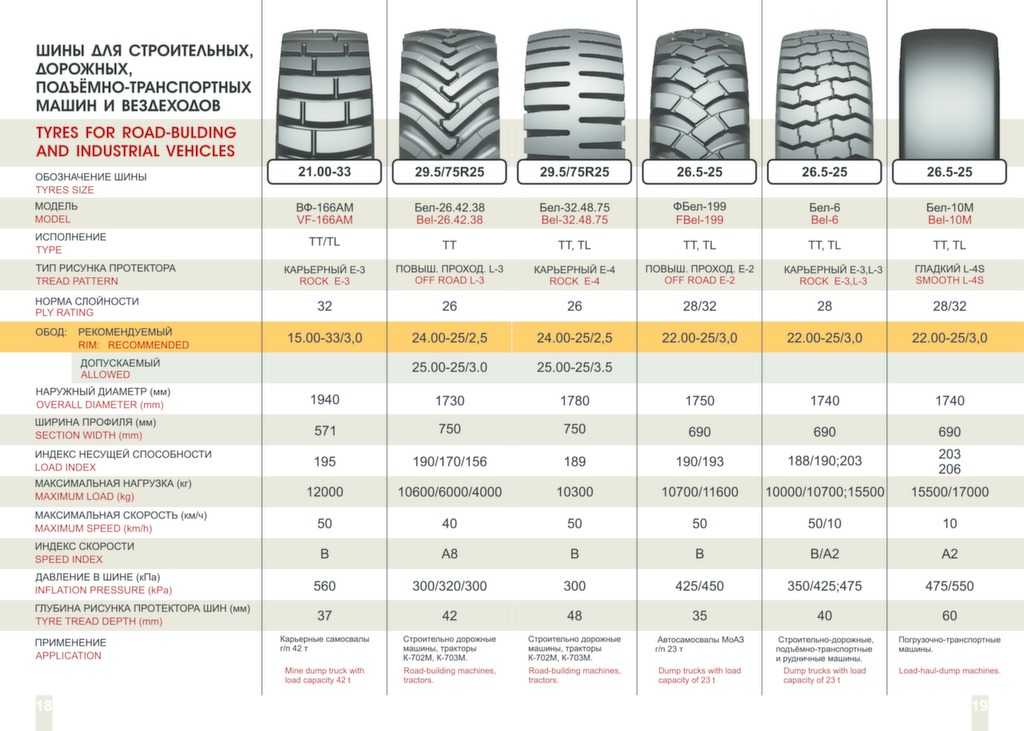
The product proved so successful that a year after it was introduced, it won bicycle races in Ireland and England. Over the next few years, Dunlop worked hard to develop tires for all vehicles, from bicycles to cars and trucks. Between 1890 to 1920, the rubber pneumatic tire underwent a range of developments, both by Dunlop and by others such as Thomas Hancock.
By the 1920s, synthetic rubbers were had been developed for tires and for the few decades, ‘Bias Ply’ tires were what everyone used. These tires were made up of two separate parts:
The inner tube was pressurized and was protected by the outer casing. The outer casing was made of layers called plies.
After WW2, Michelin developed radial tires and it was a huge step in tire development. Even though it was a much superior product, radial tires were slow to catch on in the US. Only in the early 1970s did radial tires start becoming the dominant technology.
Radial tires have since become the norm both here in the US and around the world. And billions of tires are being made every year.
Retreads have been around almost as long as modern tires themselves. Retreads were introduced when bias-ply tires were the norm. They started as a cost-effective method of reusing good quality tire casings.
The development of retreads can be attributed to Marion Oliver, who in 1912 developed and patented pre-cured treads. The method is similar to modern retreading process: First, the casing was buffed back to the base then a new tire layer was added on top.
Retreads became particularly popular during the Great Depression. People were able to use tires until they were worn down and get them retreaded. World War 2 had a similar effect on the retread industry. As post-war America struggled to make ends meet, retreads were a cost-effective way to keep cars and trucks on the road.
Between 1942 and 1944, the retreading industry grew by 500%.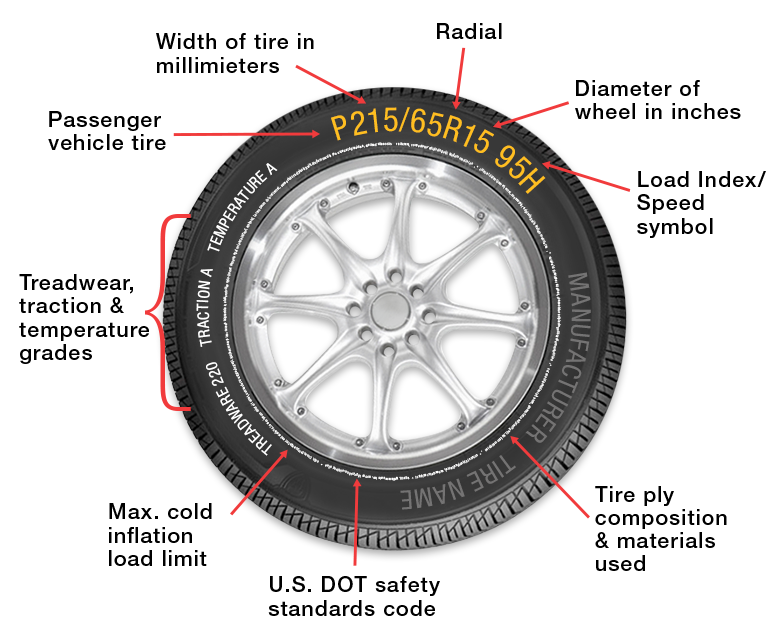 Natural rubbers finally gave way to synthetics for good and more technological advancements were developed that allowed retreads to be safer and become closer in performance to brand new tires. However, due to a mixture of reasons, including the falling cost of new tires, tire retreading slowly dwindled through the 60s, 70s, and 80s.
Natural rubbers finally gave way to synthetics for good and more technological advancements were developed that allowed retreads to be safer and become closer in performance to brand new tires. However, due to a mixture of reasons, including the falling cost of new tires, tire retreading slowly dwindled through the 60s, 70s, and 80s.
Retreading became experienced a resurgence in the 90s though when computer-controlled tire retreading machines became widely available. Machines were also developed that could scan tires ultrasound and x-ray technology which made selecting cases and in turn, retreaded tires, even safer.
Modern retreads can last just as long as new tires and are just as safe.
Tires are constantly evolving and developing. Rising oil prices and environmental concerns mean that tire manufacturers are constantly looking at ways to manufacture tires in more efficient ways. New technologies such as Airless tires are being trialed on commercial vehicles.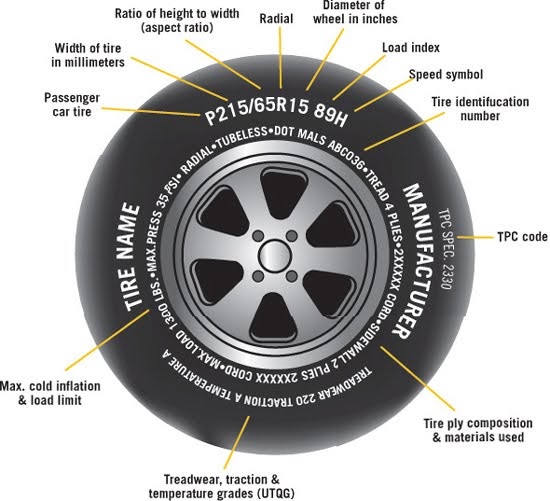
Cars themselves are changing, with electric drivetrains starting to grow and autonomous cars being developed, the needs of tires will also change as well.
In the meantime, environmental concerns are a top issue for tire manufactures generating 242 million scrap tires each year, making TreadWright Tires a vilable option when it comes to making a tire purchase.
Close
Moscow and region
Tires are one of the most important inventions of all mankind. It is worth noting that a modern car would not have become such a successful and efficient vehicle without pneumatic tires. Outwardly, the tires are little different from each other, with the exception of the tread pattern and their radius. All of them consist of various rubber compounds and fillers. Some sizzle - others don't. The round shape of the tires is maintained by the carcass. The carcass directly affects many tire characteristics. nine0003
nine0003
Diagonal frame
Radial frame
Let's consider two types: tires with a diagonal and a radial carcass. Despite the external similarity, they are structurally very different.
Frame
The bias tire has a carcass made of
multi-ply cord. As a rule, the number of layers
is a multiple of two. Textile cords of different layers
are located at an angle of 35° to 40° to each other
and intersect exactly in the middle of the tire
protector.
Frame
Breaker Belt
Frame
In radial tires, the cords are located at a
angle of 90° and are located along the entire tire
tread. And those sections of the tire that
are located in the contact patch with the road surface
are reinforced with a steel cord (it is also called a belt belt
).
In addition to the difference in the arrangement of cords, there are many other differences
- Cord threads for diagonal tires are made of nylon or kapron, for radial tires they are made of steel. nine0003
nine0003
- Bias tires can have several layers of cord - from two or more, radial tires have only 1.
- Bias tires, as a rule, have two bead rings, with a radial one.
- Most bias tube tires, tubeless radials.
Functional differences of radial tires
— Better contact with the road. Radial tires have a larger contact patch compared to bias
tires. nine0003
- The weight of a radial tire and a bias tire with the same radius will be different. Lighter tire with radial carcass
ply.
— A radial tire can carry more loads (15 to 20%) than a bias tire.
- The carcass of a radial tire has better thermal conductivity, due to this, heat dissipation in such tires
will be better.
Some differences of bias tires
— Tires with a diagonal carcass have a well-protected sidewall and are less afraid of lateral damage
compared to radial tires. In this case, diagonal tires are more protected from
In this case, diagonal tires are more protected from
side injuries.
- Bias tires are cheaper than radial tires.
- Despite their shortcomings, bias tires have found their way and continue to be used in
commercial vehicles. Radial carcass tires also found their place in a large number of
vehicles. Almost all car factories produce passenger cars equipped with tires
with radial carcass.
Answering your question
We are open 24 hours a day
24 hours a day
We work seven days a week
7 days a week
Regardless of the manufacturer, there are usually two types of bias tires: 9008 . All tires have reinforcements, which are layers of steel cord embedded in the rubber of the tire, which prevent the rubber from deforming due to external pressure. So what are the design and consumer differences between these types of tires? nine0003
So what are the design and consumer differences between these types of tires? nine0003
In bias tires, the reinforcing cords are arranged diagonally from side to side in a cross or X pattern. The coatings extend upward along the sidewalls of the tire. Radial tire reinforcements are laid side by side in overlapping layers across the tire at an approximately ninety degree angle to the centerline of the tread. In addition, more layers are applied only to the working part of the tire, resulting in sidewalls that are not as thick as bias tires. nine0003
 Radial tires dissipate excess heat better than diagonal tires. Second, because radial tires have fewer steel filaments in the sidewall, they can flex a little more. This results in better handling and smoother driving.
Radial tires dissipate excess heat better than diagonal tires. Second, because radial tires have fewer steel filaments in the sidewall, they can flex a little more. This results in better handling and smoother driving. Bias tires are more prone to wear if they do not meet their ideal performance. Radial tires generally perform better, providing longer life (after seasonal storage, they perform well) and, in many cases, better fuel economy. nine0003
So why aren't all cars fitted with only radial tires? A significant factor is cost. Radial tires are usually more expensive than bias tires (and now you know why some car manufacturers still put bias tires on most of their new models). If price is your main consideration, a bias tire will cost less than a comparable radial tire. nine0003
Radial tires, due to their design, allow for a wider tread than the sidewall height, while bias tires tend to have the same tread.
It is also possible to fit with a diagonal tire at the front and a radial tire at the rear, but never the other way around. However, there is another reason, based, again, on cost. Chances are your rear tires will need to be replaced earlier than your front tires, when it no longer makes sense to store your tires until the next season. nine0003
If you want to switch from stock bias tires to radial tires, but want to split the costs over a longer period of time, you can make just the rear tire first to slightly extend the life of the front bias tire.
Whenever a vehicle hits a bumpy road surface, it looks like the front diagonal tire wants to go one way and the rear radial tire wants to go the other way.
An interesting feature…
So which tire is right for you? It is difficult to unambiguously answer this question. While radial tires are generally better to handle, if you're riding a cruiser, it's likely that you won't overdo your tire's performance limitations.